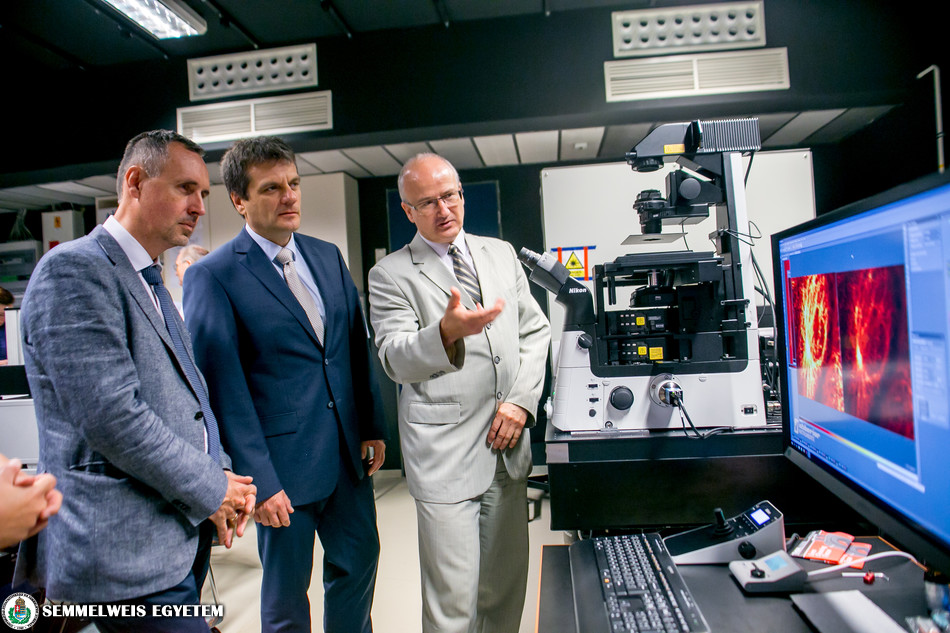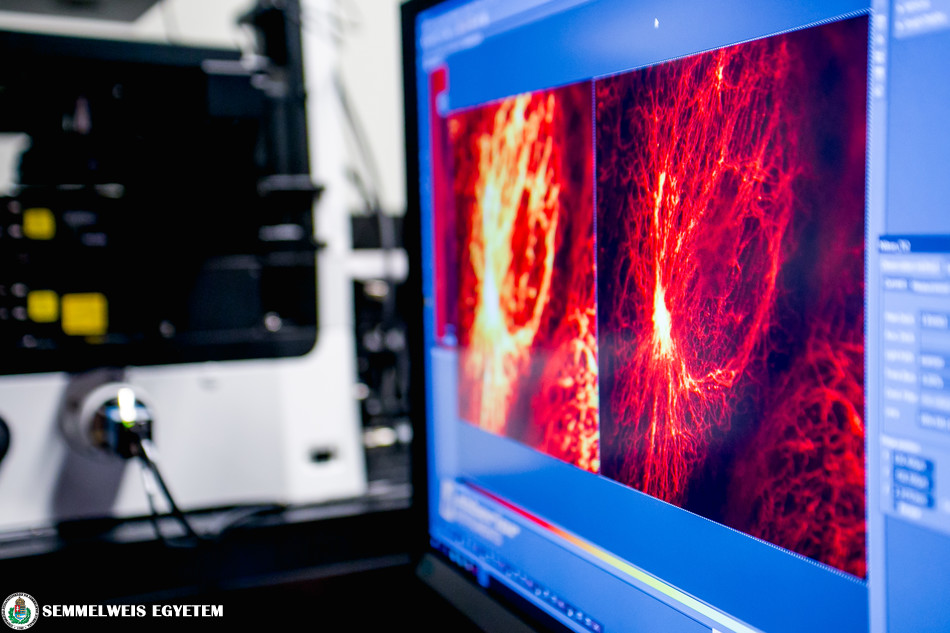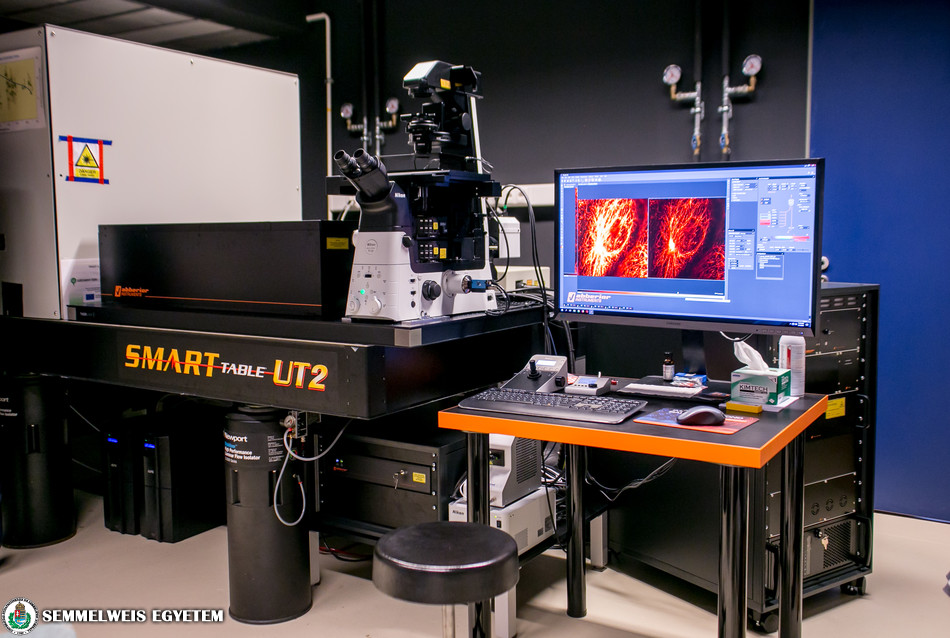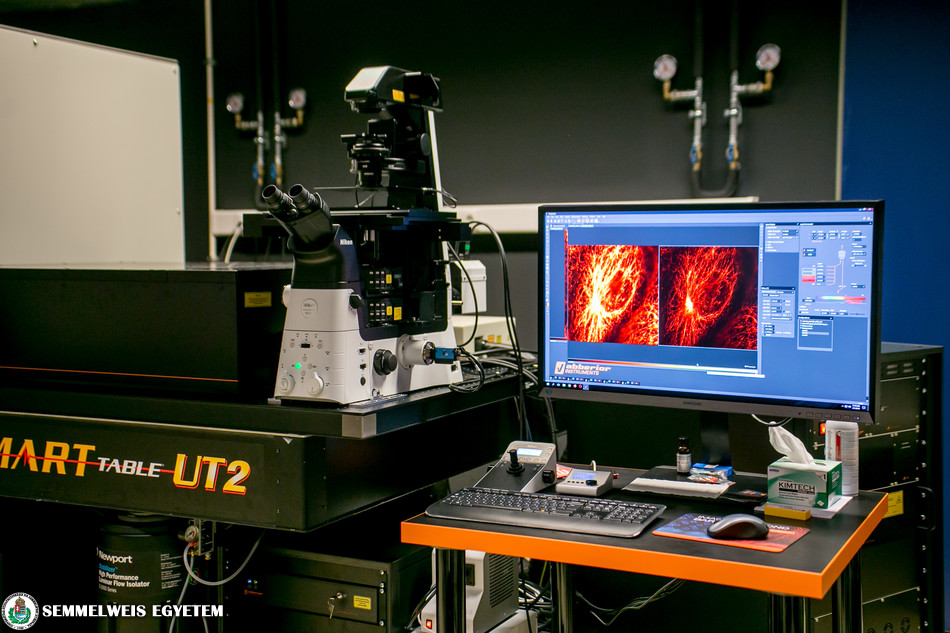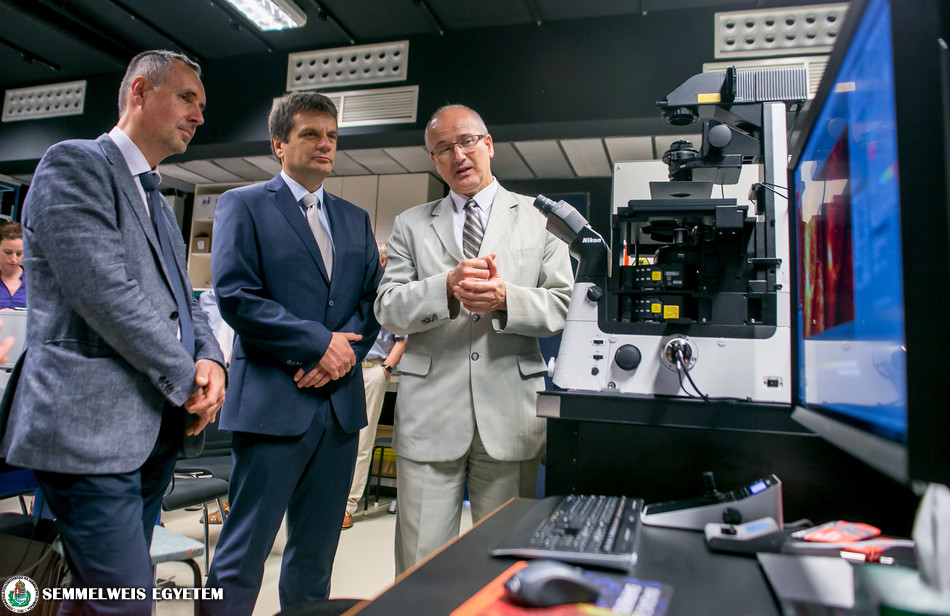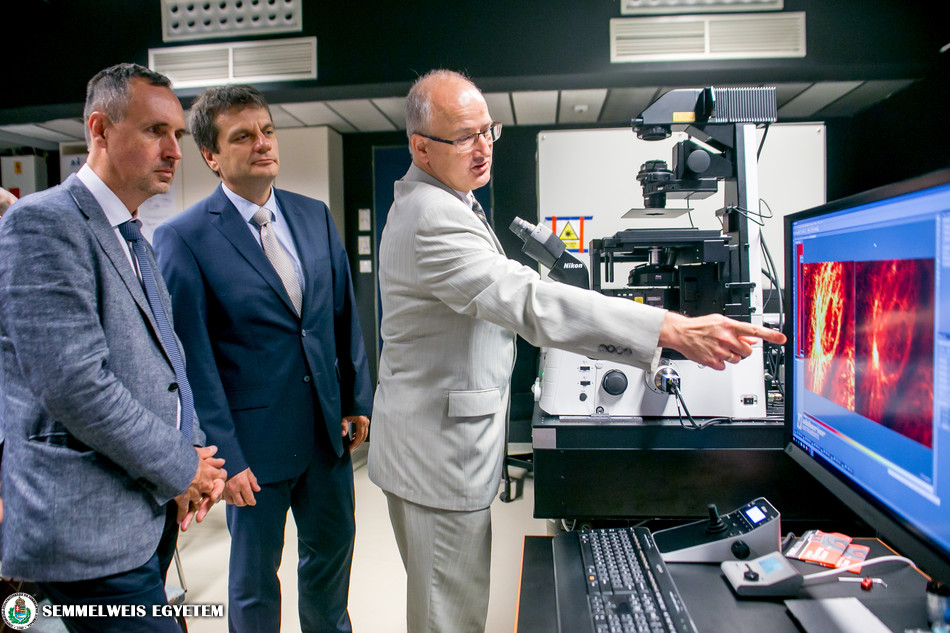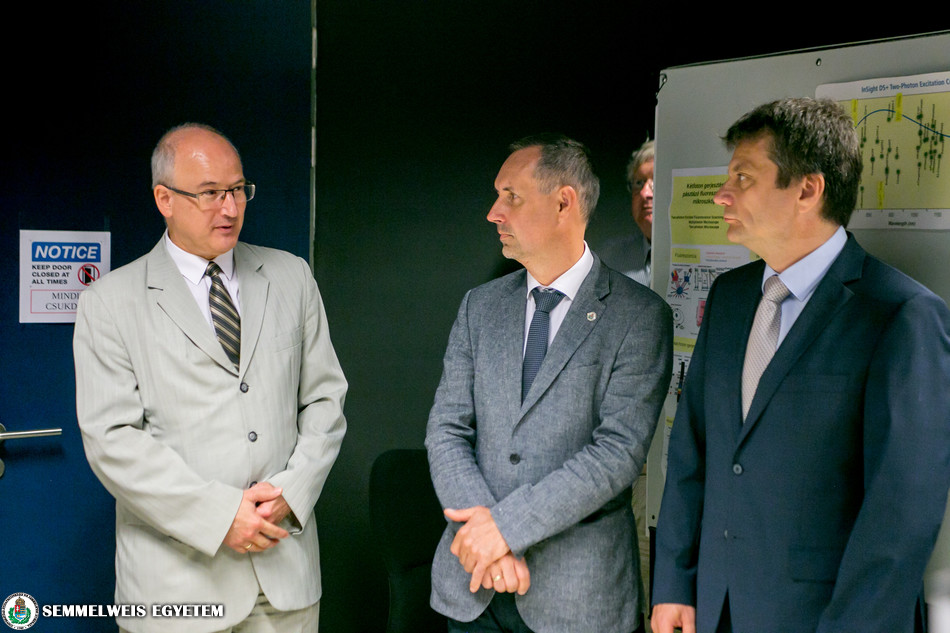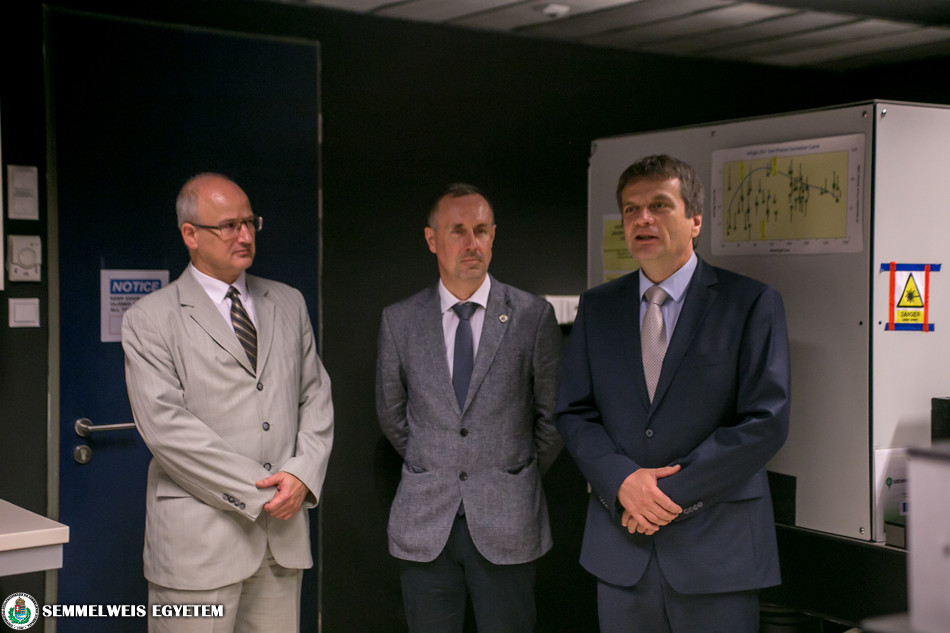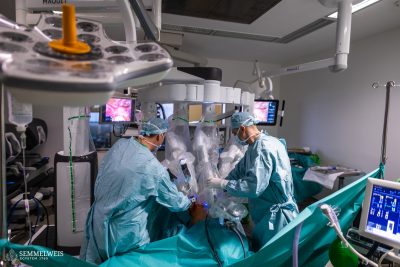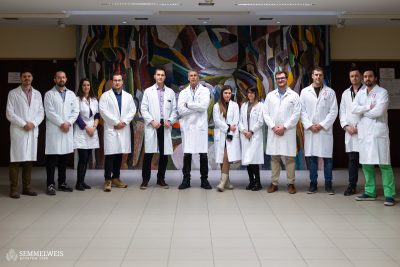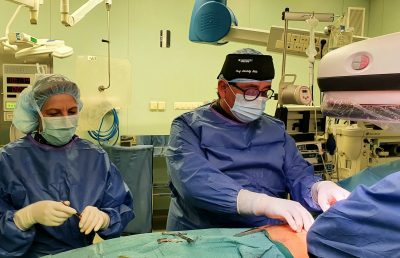A STED super-resolution microscope, combinable with two-photon generation, has been introduced at the Department of Biophysics and Radiation Biology. The laboratory functions as a professional and intellectual workshop: the research conducted here involves diseases which are in national and international focus.
At the ceremonial introduction of the device, Dr. Péter Ferdinandy, Vice-Rector for Scientific Affairs, congratulated on the project and emphasized: it is important that the availability of the instrument be extensive within and outside the university. To reach this objective, it is necessary to build an open core facility system, which he considers to be of major strategic importance.
The project, which is based on a wide-ranging professional cooperation, involves the Institute of Experimental Medicine of the Hungarian Academy of Sciences (MTA KOKI), the Budapest University of Technology and Economics (BME) and the Department of Biochemistry of Eötvös Loránd University (ELTE) as well.
The STED super-resolution microscope and the two-photon microscope complement each other in the laboratory, which can be considered as a real innovation, explained Dr. Miklós Kellermayer, director. One of the main advantages of the super-resolution microscope is that it enables the laser-initiated photochemical processes in subdiffraction volumes to be tested and used, he added. Two-photon generation reduces the effect of light scattering, which makes it possible to penetrate into the surface of biological samples (tissues, organs) in greater depth. Dr. Miklós Kellermayer said that at the Békésy György Biophysical Research Centre, equipment worth approximately 2.5-3 billion forints has been installed in the past 10 years, one of the important stages of which was placing a microscope of more than 190 million forints value in the Optical Microscopy Laboratory.
An important goal of the project was to involve the research of diseases which are in domestic and international focus. Thus, the microscope will be used to map the synaptic connections of the central nervous system, to increase the effectiveness of cardiovascular research and to optimize vascular tissue engineering processes among others.
In super-resolution microscopy, stimulated emission depletion, the so-called STED technique, was discovered by the Nobel Prize-winning physicist, Dr. Stefan W. Hell, breaking the centuries-old limits of microscopic imaging. Dr. Hell, recipient of the Semmelweis Budapest Award of 2016, made a significant breakthrough by creating a type of super-resolution nano-microscope which enables researchers to see tinier details than ever during the examination of cells and tissues.
Eszter Keresztes
Photo: Attila Kovács – Semmelweis University
Translation: Diána Módos
